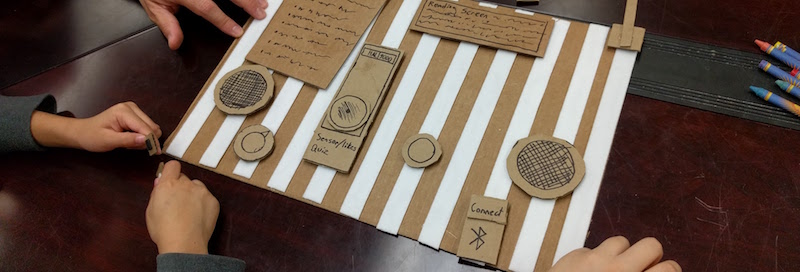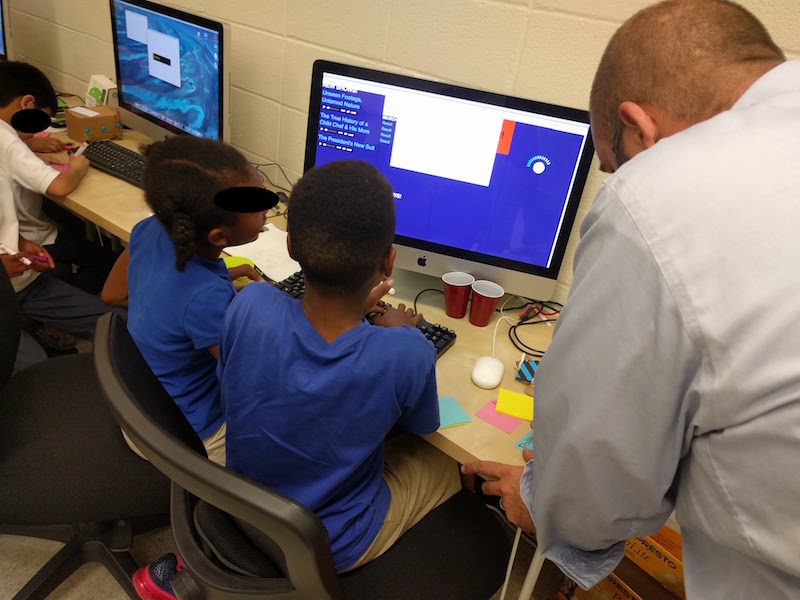

National Public Radio has important role in many people's lives. One group that is noticeably missing from NPR's target audience is children. My team worked with a very small team at NPR to explore the nexus of being a kid and audio programming by trying to answer how do we create audio experiences for children?
To explore this problem, I instantiated an inter-generational design team at the Digital Whimsy Lab. This team consisted of eight children ages seven to eleven who live in Baltimore City, four of their parents, and four design researchers from the University of Baltimore's Interaction Design and Information Architecture program. The group met each week for one month.
Our design sessions followed the model of Snack Time - Circle Time - Design Time - Big Ideas. The early sessions were generative and became more focused on evaluative as prototypes were developed and iterated upon.

We first learned that children have little concept of what a "podcast" is. That makes sense considering podcasts are listened to in very private ways like headphones or in the car. But children (at least these children) don't listen to anything unless it is part of a group — at school, in the car, or places of worship. Children rarely have agency about what they can listen to and when. The design group built low-fidelity prototypes with craft supplies and presented their ideas. Those ideas became the building blocks of the researchers' first prototypes.


We didn't think a fully-realized prototype was appropriate for our first iteration. In order to see how features should be integrated into a possible solution, we developed dozens of small cardboard "features" that could be placed on velcro boards. The boards approximated the size and physicality of phones, tablets, and wrist-mounted computing devices. The groups built their devices and, imaginatively, used the pieces in ways we hadn't intended. For example, the antenna became microphones and money became tokens with programs that could be traded.
We used this idea in novel way by creating technical prototypes of token-based programming. The children could hand each other a token and listen to an associated program on a media player. This gave the kids the ability to "share" something in the same way they talked about their grown-ups and siblings sharing things on Twitter and Facebook.
In the end, our findings included:
These findings led to the following design implications reported to NPR:
For more information about this project, see the story Kids Co-Design the Darndest Things at NPR.design.
This was one of my favorite projects I've worked on over the last 10 years. First, I'm a huge fan of public radio so being able to help connect more people to it is a personal "win". Second, it was a nice change of pace from my usual design team that met twice a week, for an entire school year and worked as a nice prototype for my more recent work in working with the local communities through co-designing in libraries.
leader, supervisor, designer, programmer, hardware builder, researcher. I oversaw one employee and two volunteers for this project.
user-centered design, co-design, iterative prototyping, user test, lab studies, internet of things, sketching
Javascript, Arduino, PHP


More information: